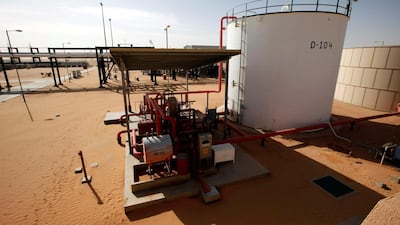Brent declined on Thursday in spite of declines in US crude stockpiles and Opec’s ongoing output restrictions after the Federal Reserve indicated there would not be further easing of monetary policy on the horizon.
Brent, the benchmark for light, sweet crude was trading at $64.48 per barrel down $0.57 at 11.32am UAE time on Thursday, while the West Texas Intermediate was at $57.93, down $0.60.
US inventories continued to decline for the seventh consecutive week according to the latest report from the Energy Information Administration, falling 8.5 million barrels in the week ending July 26, exceeding analyst expectations. It’s the lowest level of decline seen since November. Analysts had expected the inventory levels to decline by 2.6 million barrels last week.
Meanwhile, Opec+ as the alliance led by Saudi Arabia and Russia is known, continued to cut back production, with output from the group declining to an eight-year low in July. Saudi Arabia and Russia have pledged to keep the restrictions of around 1.2 million bpd until March as the group remained concerned about rising US supply in the market.
Iran, which is also a member of Opec, has seen its barrels taken off the market following the US administration’s efforts to squeeze its exports to zero. Libya, which had seen revival of production from its Sharara field saw loadings halt abruptly yesterday after a valve on the pipeline transferring crude to an export terminal was shut.
The Libyan National Oil Company declared a force majeure - or halt - on loadings from the country’s largest field, even as output plunged to 950,000 bpd, the lowest in five months.


